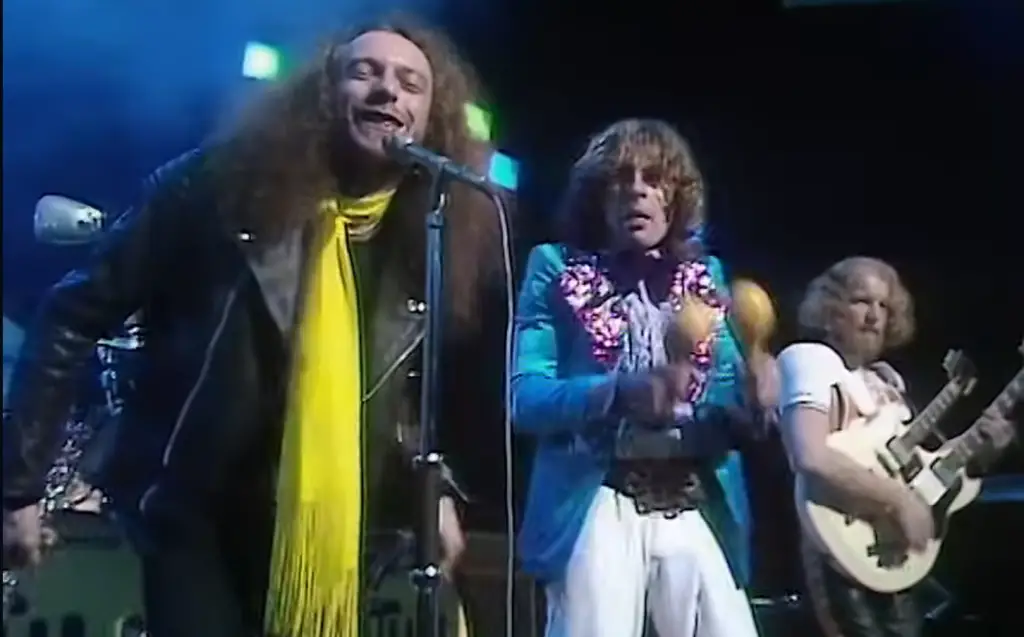Jethro Tull – “Living in the Past”: A Jazz-Rock Waltz of Rebellion and Reflection
Released in 1969 as a standalone single in the UK (and later featured on the 1972 compilation album Living in the Past), Jethro Tull’s “Living in the Past” is one of the band’s earliest and most distinctive hits. With its unusual time signature, jazzy swing, and flute-driven melody, the track stood out sharply from the blues-heavy and psychedelic sounds dominating the rock scene of the era.
But this isn’t just a novelty song. It’s a wry, sly, and subversive anthem wrapped in a seemingly lighthearted package — equal parts satire and swing, delivered with the sophistication and quirk that would come to define Jethro Tull.
The Sound: Jazz Waltz Meets British Folk Rock
“Living in the Past” is famous for being written in 5/4 time — an uncommon meter in popular music. This unusual rhythm gives the song a distinctive, lilting off-balance feel, like it’s dancing to a tune nobody else is quite in step with.
Musically, the track blends:
- A prominent walking bass line by Glenn Cornick
- Brassy horn stabs and subtle strings, arranged with orchestral flair
- Light jazz drumming that keeps the complex rhythm smooth
- And, of course, Ian Anderson’s signature flute, weaving melodies that feel both whimsical and defiant
It’s a rare mix: classical sophistication meets rock attitude, all in a package that clocks in under four minutes.
The Lyrics: Nostalgia with a Bite
“Happy and I’m smiling / Walk a mile to drink your water…”
At first glance, “Living in the Past” seems like a cheerful tune about simpler times. But as the song progresses, it becomes clear that Anderson is mocking the idea of mindless conformity and blissful ignorance.
“Let us close our eyes / Outside their lives go on much faster…”
Rather than celebrating nostalgia, the lyrics question blind tradition and willful detachment. The title is ironic — living in the past isn’t painted as idyllic, but as a sort of cultural sleepwalking. Anderson’s lyrics, as always, carry more than a touch of English cynicism and social critique.
Chart Success and Cultural Significance
“Living in the Past” was a breakout hit for the band:
- Reached #3 on the UK Singles Chart in 1969
- Later released in the U.S. in 1972, where it became Jethro Tull’s first Top 20 American hit
- Helped establish Ian Anderson as a unique and theatrical frontman, steering the band away from blues roots and toward progressive experimentation
Its success paved the way for later albums like Aqualung and Thick as a Brick, and for Jethro Tull to become one of the defining bands of prog rock with a folk twist.
Legacy: A Defining Snapshot of Early Tull
Though often overshadowed by the conceptual weight of their later work, “Living in the Past” is still beloved by fans and music critics alike for its charm, musical complexity, and singular style. It remains:
- A concert staple in Jethro Tull’s live sets for decades
- A touchstone for other musicians exploring odd time signatures and orchestral arrangements
- A reminder of the band’s ability to combine pop accessibility with artistic ambition
And it’s a testament to the band’s early identity — rebellious, refined, and completely unconcerned with following the crowd.
Final Thoughts
“Living in the Past” is more than a clever tune in an odd time signature. It’s a statement of artistic independence, a subtle critique of cultural complacency, and a demonstration of what happens when a rock band dares to be truly different.
It’s quirky but grounded.
Lighthearted, yet sharply intelligent.
And it still grooves like nothing else before or since.



Facebook Comments